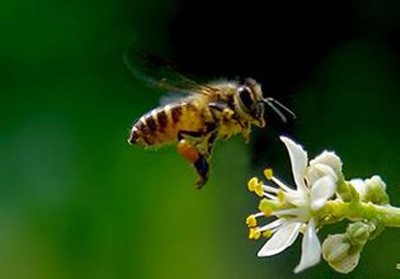(单词翻译:单击)
听力文本
You have bees to thank every time you drizzle some honey into your tea.
And the human-honeybee relationship is long-standing.
Iconography of honeybees adorns 4400-year-old walls in ancient Egypt.
Rock art has been found that depicts a stone age bee harvest.
But exactly when early farmers began to exploit bees has been unclear.
Those farmers exploited bees for more than honey.
Research has shown that they also employed the beeswax for cosmetics, fuel, medicine, and to perform rituals.
Beeswax contains complex fats that leave a recognizable residue on pottery and other archaeological artifacts.
And scientists have now used that beeswax residue to analyze what they’ve determined to be the earliest known human-and-bee association, dating back some 9,000 years.
The researchers surveyed Europe, the Near East and northern Africa.
They found beeswax on pottery vessels from Neolithic farming sites in Anatolia, in or near modern-day Turkey.
They also discovered the first evidence of beeswax at Neolithic sites in Northern Africa.
And the lack of wax residues in Ireland, Scotland and the Scandanavian peninsula led them to conclude that those locations were above what must have been a northern limit for honeybees.
The study is in the journal Nature.
The researchers say that the beeswax residues at these human-occupied sites may be clues pointing to the very beginnings of bee domestication.
With thousands of years of sweet results for us all.
参考译文
每次在茶中滴入蜂蜜时你都要感谢蜜蜂的馈赠。
而且人类很久以来就和蜜蜂有着千丝万缕的联系。
在4400年前的古代埃及墙壁上就出现过蜜蜂的身影。
人们还发现有雕刻石器时代收获蜂蜜的岩画。
但古代的农民们到底何时让蜜蜂为自己所用仍不清楚。

而且那些古代的农民不仅是从蜜蜂身上获取蜂蜜。
研究表明他们还使用蜂蜡制成化妆品、燃料、药品并且将蜂蜡用于宗教仪式。
蜂蜡中含有的复杂脂类物质会在陶器及其他考古文物上留下能够鉴别出的残留物。
而且科学家们已经通过对蜂蜡的这种残留物进行分析希望得出人类和蜜蜂的关系最早可追溯到9000多年以前的结论。
研究人员在欧洲、近东及北非地区进行了调查。
他们在安纳托利亚、近现代土耳其新石器农耕遗址的陶器上发现了蜂蜡残留物。
同时他们还在北非的新石器的遗址中发现了蜂蜡的第一证据。
而爱尔兰、苏格兰以及斯堪的纳维亚半岛未发现蜂蜡残留物使得研究人员断定这些地区一定是蜜蜂的北部边界地区。
这项研究已在《自然》杂志上发表。
研究人员表示在人类所居住过的场所发现的蜂蜡残留物可能表明是养殖蜜蜂的开始。
这表明人类几千年前就已经在享受蜂蜜了。
译文为可可英语翻译,未经授权请勿转载!
重点讲解
1.stone age 石器时代
例句:Most people in 18th century England endured a standard of living roughly equivalent to that of the stone age.
在18世纪,大多数英国人还忍受着和石器时代大体相当的生活水准。
2.farming site 养殖场地
例句:In this farming culture site, the archaeologists discovered farm tools from 3000 years ago.
在这个农耕文明遗址中,考古人员发现了3000年前的农具。
3.determine to 决定
例句:Our ability to cope with change and disruption determine to a great degree, our peace, happiness and contentment in life.
我们应付变化以及混乱情况的能力很大程度上决定了我们生活的安宁、幸福和满意度。
4.lack of 缺乏
例句:You can't fault them for lack of invention.
你不能因为他们缺乏创新就指责他们。


